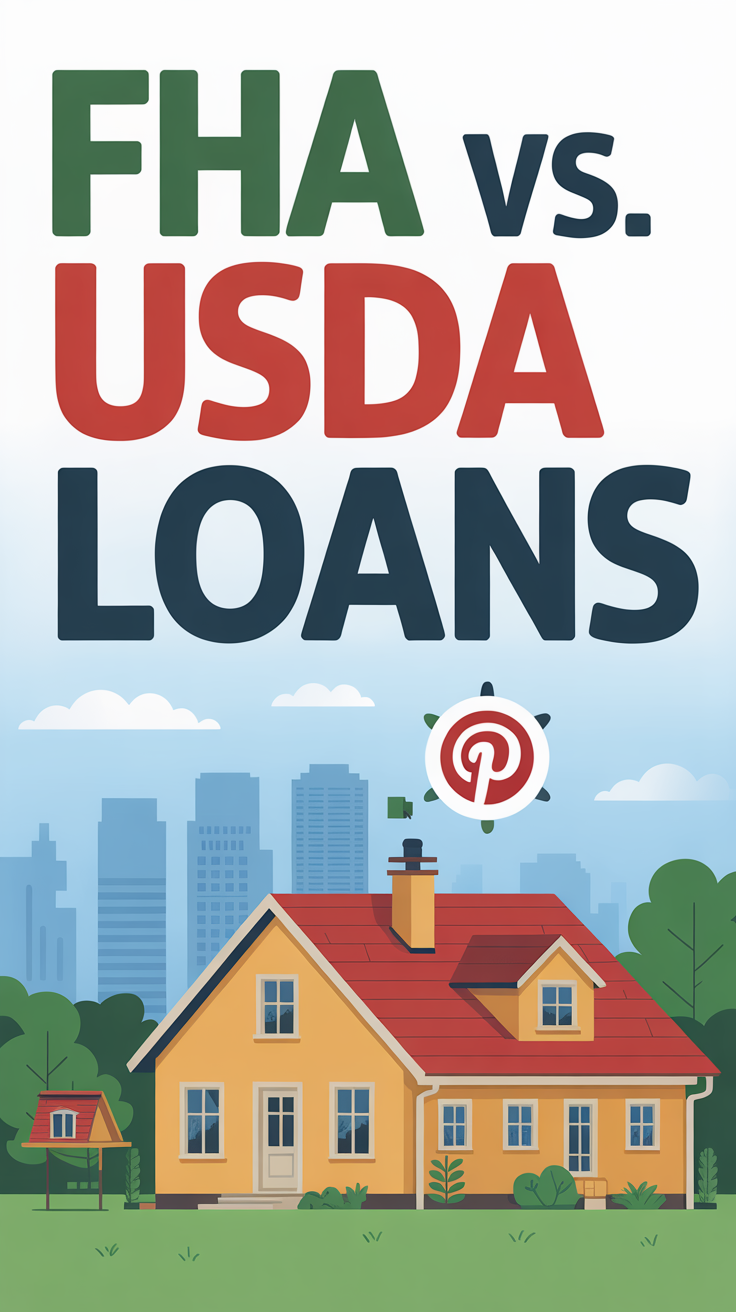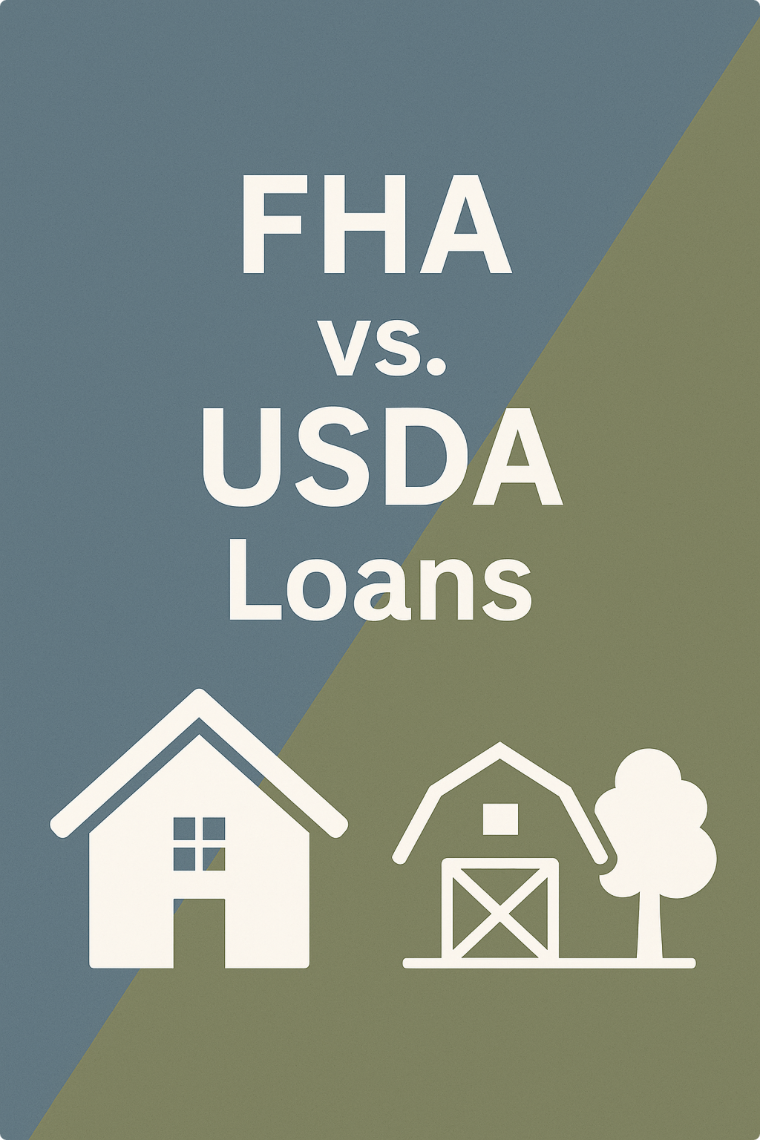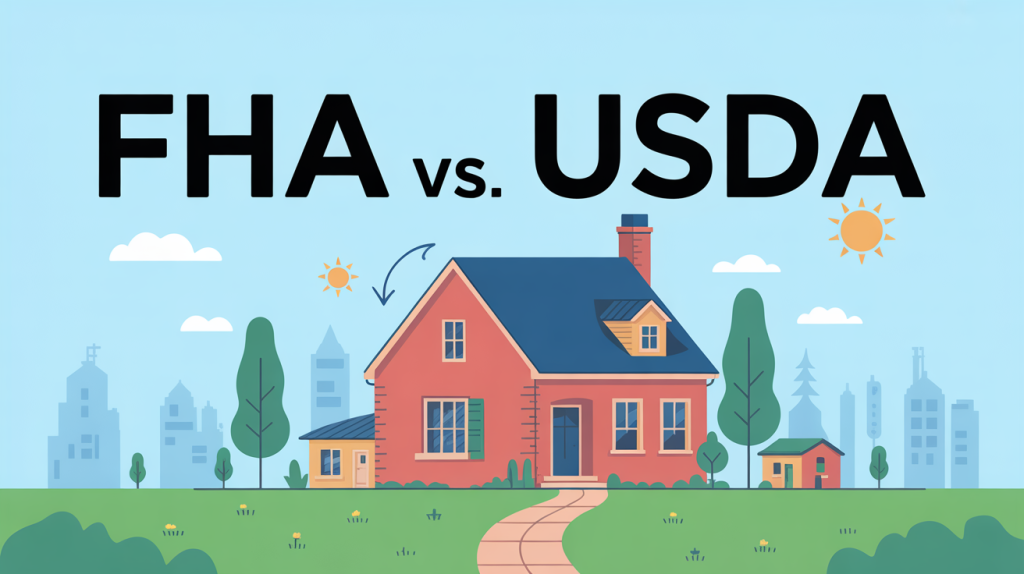As a real estate agent, you’re not just selling homes; you’re guiding clients through one of the most significant financial decisions of their lives. A big part of that journey is navigating the complex world of mortgages. Two government-backed loan programs you’ll frequently encounter are FHA and USDA loans. While both are designed to make homeownership more accessible, they serve different types of buyers and have distinct requirements.
This guide will break down the FHA and USDA loan programs in simple, easy-to-understand language. We’ll explore their key features, benefits, and application processes, and then put them head-to-head in a direct comparison. By the end, you’ll be equipped with the knowledge to confidently advise your clients on which loan might be the right fit for their unique situation.
Understanding FHA Loans
The Federal Housing Administration (FHA) loan program has been a cornerstone of the U.S. housing market since its inception during the Great Depression. Its primary mission is to make homeownership more attainable for a broader range of Americans, particularly those who might not qualify for conventional financing due to lower credit scores or limited down payment funds. FHA loans are insured by the federal government, which gives lenders the confidence to offer more flexible terms.
Key Features of FHA Loans
- Low Down Payment: This is perhaps the most well-known benefit of FHA loans. Borrowers with a credit score of 580 or higher can qualify for a down payment as low as 3.5% of the home’s purchase price. For those with credit scores between 500 and 579, a 10% down payment is required. This is a significant advantage compared to the 20% often required for conventional loans to avoid private mortgage insurance.
- Flexible Credit Requirements: FHA guidelines are more forgiving when it comes to credit history. While a 580 score is needed for the lowest down payment, the program accepts scores as low as 500. Lenders may also consider non-traditional credit histories, such as rent and utility payments, which can be a lifeline for buyers with limited credit.
- No Income Limits: Unlike some other government-backed programs, FHA loans have no maximum income restrictions. This makes them accessible to a wide range of borrowers, regardless of their earning potential.
- Nationwide Availability: FHA loans are not restricted to specific geographic areas. They can be used to purchase homes in urban, suburban, and rural locations across the country.
- Mortgage Insurance Premium (MIP): To protect lenders against default, FHA loans require a Mortgage Insurance Premium (MIP). This includes an upfront premium of 1.75% of the loan amount, which can often be rolled into the mortgage, and an annual premium that is paid monthly. The annual premium typically ranges from 0.15% to 0.75% of the loan amount and is usually required for the life of the loan.
The FHA Loan Process: A Simple Breakdown
For many first-time homebuyers, the mortgage process can seem daunting. Here’s a simplified, step-by-step look at the FHA loan process:
- Prequalification: The first step is to get prequalified with an FHA-approved lender. This will give your clients an idea of how much they can borrow and demonstrate to sellers that they are serious buyers.
- Find a Home: Once prequalified, your clients can begin their home search. It’s important to note that the property must meet HUD’s minimum property standards for safety and soundness.
- Loan Application: After finding a home, your clients will complete a full loan application with their chosen lender. This will require detailed financial documentation, including pay stubs, tax returns, and bank statements.
- Appraisal: The lender will order an FHA-approved appraisal to determine the home’s value and ensure it meets HUD’s property standards.
- Underwriting: The lender’s underwriter will review the entire loan file to ensure it meets all FHA guidelines.
- Closing: Once the loan is approved, your clients will sign the final paperwork at closing and receive the keys to their new home!
Understanding USDA Loans
The United States Department of Agriculture (USDA) loan program, also known as the Rural Development Guaranteed Housing Loan Program, is a lesser-known but powerful option for homebuyers in eligible rural and suburban areas. The program’s goal is to promote homeownership in less populated parts of the country by offering 100% financing to qualified borrowers.
Key Features of USDA Loans
- No Down Payment: This is the standout feature of the USDA loan program. Eligible borrowers can finance 100% of the home’s purchase price, eliminating the need for a down payment. This can be a game-changer for buyers who have good credit and stable income but have not been able to save a large sum for a down payment.
- Income Limits: To ensure the program serves its intended audience, USDA loans have income restrictions. Borrowers’ household income generally cannot exceed 115% of the area’s median income. These limits vary by location and household size.
- Location, Location, Location: USDA loans are geographically targeted. The property must be located in a USDA-eligible rural area. However, the definition of “rural” is broader than you might think. Many suburban and small-town communities qualify. You can check a property’s eligibility on the USDA’s website.
- Credit Requirements: While there is no official minimum credit score, most lenders look for a score of 640 or higher for streamlined processing. Borrowers with lower scores may still qualify but will likely face a more rigorous manual underwriting process.
- Guarantee Fee: Instead of mortgage insurance, USDA loans have a guarantee fee. This includes an upfront fee of 1% of the loan amount, which can be rolled into the mortgage, and an annual fee of 0.35% of the loan’s outstanding principal balance, paid monthly. These fees are typically lower than FHA’s MIP.
The USDA Loan Process: A Simple Breakdown
The USDA loan process is similar to the FHA process, with one key difference: the loan must be approved by both the lender and the USDA.
- Check Eligibility: Before anything else, you’ll need to verify your client’s income and the property’s location to ensure they meet USDA eligibility requirements.
- Prequalification: Just like with an FHA loan, getting prequalified with a USDA-approved lender is the first step.
- Find a Home: Your clients can then search for a home in a USDA-eligible area.
- Loan Application: Once they have a signed purchase agreement, they will complete the full loan application.
- Lender Approval: The lender’s underwriter will review the loan file.
- USDA Approval: After the lender approves the loan, it is sent to the USDA for final approval. This additional step can sometimes add a few extra days to the closing timeline.
- Closing: Once the USDA gives the green light, your clients will close on their new home.

FHA vs. USDA: A Head-to-Head Comparison
Now that we’ve covered the basics of both FHA and USDA loans, let’s put them side-by-side to help your clients make an informed decision.
| Feature | FHA Loan | USDA Loan |
|---|---|---|
| Down Payment | 3.5% minimum | 0% |
| Credit Score | 580+ for 3.5% down, 500-579 for 10% down | 640+ recommended |
| Income Limits | None | Yes, typically 115% of area median income |
| Location | Nationwide | USDA-eligible rural and suburban areas |
| Property Type | 1-4 units, primary residence | Single-family, primary residence |
| Mortgage Insurance | 1.75% upfront + 0.15-0.75% annual premium | 1% upfront + 0.35% annual fee |
Key Differences Explained
- Down Payment: This is the most significant difference. USDA’s 0% down payment requirement is a huge advantage for buyers with limited savings. FHA’s 3.5% down payment is still low, but it can be a hurdle for some.
- Credit Score: FHA is more lenient on credit scores, making it a good option for buyers who have had some credit challenges. USDA’s recommended 640 score is higher, but still accessible for many.
- Income and Location: This is where the paths diverge. FHA is open to everyone, everywhere. USDA is specifically for moderate-income buyers in rural and suburban areas. For clients looking in a major city, FHA is the only option of the two. For clients in a qualifying small town, USDA could be a perfect fit.
- Mortgage Insurance/Guarantee Fee: While both loans have these fees, USDA’s are generally lower. This can result in a lower monthly payment for your clients.
Conclusion: Which Loan is Right for Your Client?
So, FHA or USDA? The answer, as is often the case in real estate, is: it depends. Here’s a simple way to guide your clients:
- Choose FHA if you are:
- Is buying in an urban area.
- Has a credit score below 640.
- Needs to purchase a multi-unit property.
- Choose USDA if you are:
- Is buying in an eligible rural or suburban area.
- Has a credit score of 640 or higher.
- Meets the income requirements.
- Wants to avoid a down payment.
By understanding the nuances of these two powerful loan programs, you can provide invaluable guidance to your clients, helping them choose the path to homeownership that best suits their needs and financial situation. You’ll not only be a real estate agent but a trusted advisor, empowering your clients to make confident and informed decisions.
References
- FHA Loan Requirements: https://www.fha.com/fha_loan_requirements
- USDA Loan Requirements: https://www.rd.usda.gov/programs-services/single-family-housing-programs/single-family-housing-direct-home-loans
- FHA vs. USDA Loan Comparison: https://themortgagereports.com/21672/usda-home-loans-vs-fha-comparison-first-time-home-buyers
























